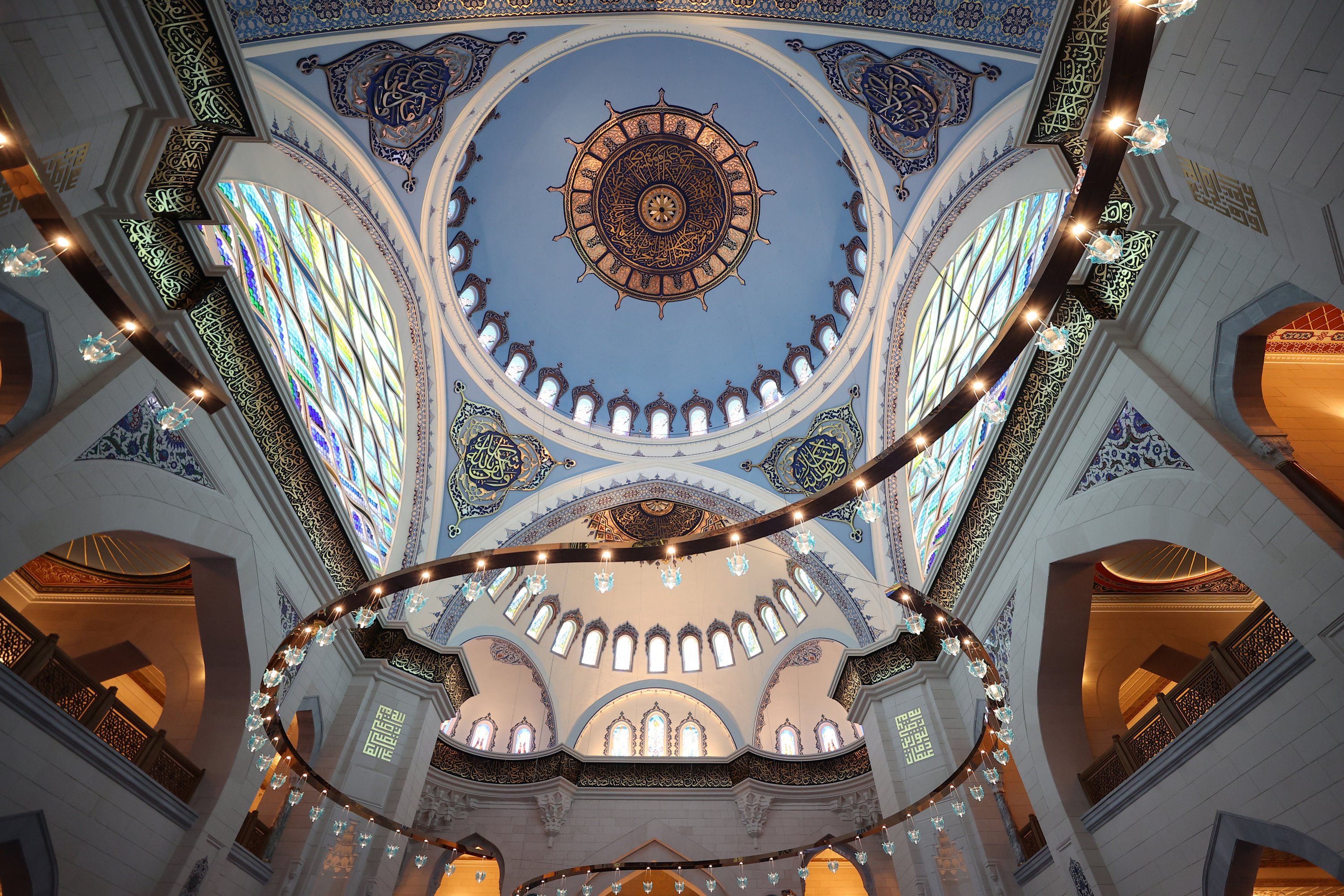© Turkuvaz Haberleşme ve Yayıncılık 2026
Barbaros Hayrettin Pasha Mosque, deriving its name from the historic Ottoman navy captain, located in Istanbul's bustling business hub Levent opened its doors for worshippers on Friday following three years of construction.
The foundation of the mosque was inspired by Süleymaniye Mosque, which is considered one of the most important examples of classical Ottoman architecture by master architect Mimar Sinan, who shaped Ottoman lands and was laid on July 3, 2020, during a ceremony attended by President Recep Tayyip Erdoğan.
Speaking at the inauguration ceremony of the mosque, following the Friday prayer, President Erdoğan said, “The soldiers of Barbaros Hayrettin Pasha were 'levends' (irregular soldiers of the Ottoman navy). That is why this district is called Levent.”
“When we were asked, we opined that the name 'Captain-i Derya Barbaros Hayrettin’ is appropriate,” he continued, noting that this district longed for such a mosque. He said the construction of the mosque finished within a short period, adding that TL 750 million ($38.2 million) was allocated for the project.
The mosque, spanning a surface of 7,000 square meters (44,291 square feet) was built on a plot measuring 18,500 square meters. According to projections, it will be the largest mosque in the area between Sarıyer's Büyükdere and the monumental Yıldız Mosque constructed during the reign of Sultan Abülhamid II.
Upon its opening, Barbaros Hayrettin Pasha Mosque will offer a host of amenities such as a car park, a book cafe, a kindergarten, a digital visual arts hall and multi-purpose halls. Combining classic Ottoman architectural elements with modern techniques and nanotechnology, the mosque boasts a magnificent dome crafted from solid copper sheets, adorned with gold and silver accents reminiscent of the main dome of the country's largest Grand Çamlıca Mosque.

With a main dome diameter of 24 meters and a height of 44 meters, the mosque is surrounded by four minarets, two of which were built with a length of 79 meters and another two with a length of 92 meters.
The interior features works of the calligrapher Ferhat Kurlu, who inscribed verses of Surah Ibrahim from the Quran, highlighting the importance of water and sea. Similarly, with reference to the sea, miniature and illumination works, which include blue tones, were prepared by Mustafa Çelebi.
The "sea" themed blue carpets specially woven in western Manisa province have been laid in the mosque. The construction of inner parts, including a 13.5-meter-high mihrab (prayer niche indicating the direction of Kaaba) and the preaching pedestal were completed as well. Similarly, the installation of doors inside the mosque and the large main door designed using Seljuk patterned techniques with a width of 5.9 meters and a height of 13 meters were completed.
Stating the mosque was ready for worship as carpets were laid, Ergin Külünk, president of the Levent Mosque Education, Culture and Service Units Association for Construction and Sustenance in his interview with Anadolu Agency (AA) on Thursday said that they tried to deliver a thematic mosque that represents Barbaros Hayrettin, his works, the sea and related details.
He also noted that the special tiles prepared exclusively for the Barbaros Hayrettin Paşa Mosque, using very modern but classical patterns and motifs, were laid on an area measuring 600 square meters based on drawings of Mehmet Gürsoy, who was awarded the "Living Human Treasure" by UNESCO in 2009.
Emphasizing the adherence to the architectural legacy of Mimar Sinan, Külünk highlighted that the mosque is an example of classic work that would contribute to attracting foreign tourism.
